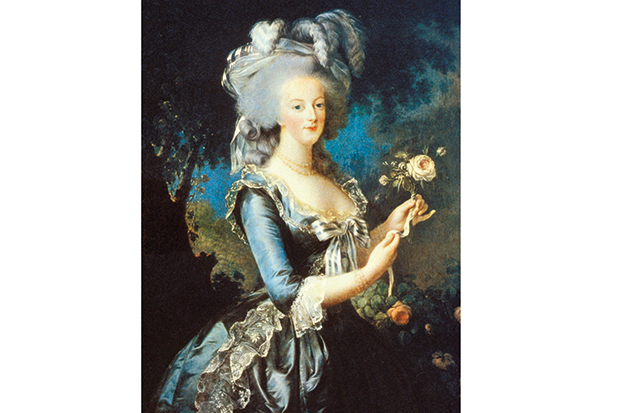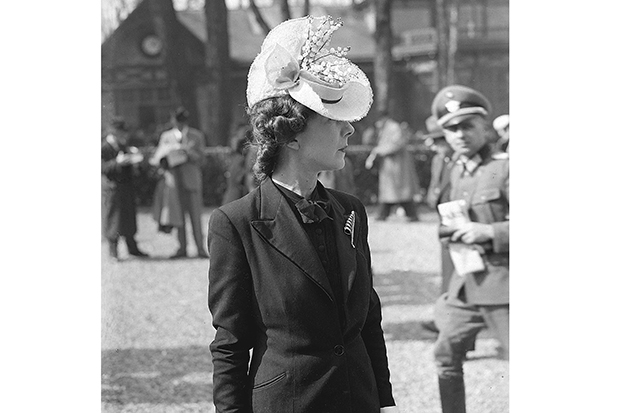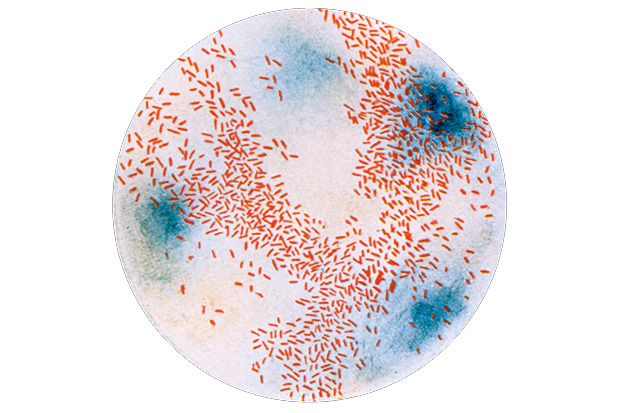France’s problems today should lessen the condescension of posterity towards Louis XVI. Presidents of the Republic have proved just as incapable as the King of reforming privileged corporations — stemming the flight of skills and capital — and winning popular confidence. Louis XVI’s failure to manage France after 1789 is easier to understand after reading John Hardman’s complex , well-researched, gripping 500-page biography .
Louis XVI’s greatest problem was the French national debt. It had reached four billion livres — accumulated over many wars — and there was an annual deficit of 100 million livres. As a result, Hardman points out, in the 1780s, whereas the British government could borrow at 3. 5 per cent, the French government had to pay 6 per cent, and often more. Unless its finances were reformed, France would be unable to fight more wars. It was a financial crisis, not class tensions (the French nobility was more open than the English peerage), which led to the summoning of the States General and the outbreak of the French Revolution. Revolutionary governments later paid off the debt through inflation, and the sale of the property of the clergy — and of ‘enemies of the Revolution’.
Before 1788, however, as Hardman shows, Louis XVI had been relatively successful. In a grain crisis in 1775, he had used troops to restrain hungry crowds. He personally organised French intervention in the War of American Independence — a rare triumph over Britain, which is the subject of a major exhibition at Versailles from July to October this year.
Under Louis XVI, before France embarked on 25 years of revolution and warfare, a new France — naval, commercial, global — had begun to emerge. The King personally encouraged geographical exploration and agriculture, teaching the Dauphin to plough in the flowerbeds of Versailles. Commercial treaties were signed with Spain, Sweden, the Netherlands, Russia and, above all, Britain. Paris enjoyed a building boom.
Hardman has devoted much of his life to Louis XVI; some of the excellent illustrations are of objects in his own collection. He uses many new sources, such as the papers of the Navy minister the Marechal de Castries, and the magnificent diary of the ambassador the Marquis de Bombelles, spanning the entire period 1780–1822. Hardman reveals the importance of ministers’ rivalries in destroying the monarchy, which some of them outlasted. Even the great Foreign Minister the Comte de Vergennes secretly helped the odious Cardinal de Rohan escape condemnation in the Affair of the Queen’s Necklace.
Louis XVI’s nemesis, in Hardman’s opinion, was his finance minister Jacques Necker, a Swiss banker of German origin with links to London, where his bank had a branch, and Vienna. He undermined the King’s government when out of office and mishandled finances and policies in 1789. Like his writer daughter Madame de Staël, Necker was more of a courtier — indeed a protégé of the King and Queen — and less of a revolutionary than he later claimed. In 1789 the King had no ‘pilot to weather the storm’: no Mazarin, no Turenne, no Pitt.
Hardman writes that the ‘central tragedy’ of the reign was that Louis XVI called the third estate into existence in 1787 — in order to secure consent to more taxation — but sided with the nobility (or rather its more reactionary representatives) in 1789. As early as 10 June 1789 (when the King had retired to Marly, devastated by the Dauphin’s death), the third estate had begun to assume royal powers. Some royal officials, Hardman shows, had started to cooperate with the revolutionaries by whom they were later lynched. On 6 October 1789 La Fayette used the Paris National Guard, partly formed of mutinous royal guards who had captured the Bastille on 14 July, to take control of the King and the royal family — in effect a military coup. The King, in contrast, unlike later French governments, failed to use the provinces or the army against Paris. He was no good at speaking to soldiers.
Louis was undermined — unmanned — by his wife as well as his ministers. He allowed her a political role. She was present at certain of his meetings with ministers. She helped organise Necker’s return to power in August 1788. They fled Paris together in June 1791.
On the other hand, using the research of a couple devoted to Louis XVI called Paul and Pierrette Girault de Coursac, Hardman shows that in many of her negotiations in 1779–82 Marie Antoinette was acting for herself and against the King, from whom they were concealed. In her letters she often crossed out ‘I’ and substituted ‘the King’, and showed herself ‘cruder, more immature and more vengeful’ than her husband. In Mirabeau’s letters to the Queen (of which there is still no accurate edition) he is rude about the King — presumably to please his paymistress the Queen.
In recently decyphered letters, Marie Antoinette declares to ‘my very dear and tender friend’, the handsome Swedish officer Count Fersen: ‘je vous aime à la folie’. Her infidelity — for which there is much other evidence, including La Fayette’s memoirs — may be why after 1788 the King was occasionally found in tears — or abstracted and depressed. Their divergence, both political and personal, was no secret to their closest relations and advisers. She herself wrote: ‘My fate is to bring misfortune.’
Even Hardman’s exculpatory biography cannot hide Louis XVI’s role in his own downfall after 1789. He was as extravagant in expenditure on horses and palaces (he had more of both than Louis XIV) as his wife was on clothes and parties. By visiting revolutionary headquarters at the Hotel de Ville in Paris three days after the fall of the Bastille, he legitimised the murders of his officials and soldiers — when he still had the means to try to punish the murderers. Thereby, as so often, he encouraged his enemies and discouraged his supporters. Both in 1789 and 1792 he allowed court etiquette to alienate parliamentary deputies. He declared war on Austria on 20 April 1792, although he knew it could destroy the monarchy — and hundreds of thousands of lives.
Many officials died as a result of their loyalty to Louis XVI: if they had emigrated, they and their families would have survived. On 10 August 1792, he left guards and courtiers to die defending the Tuileries palace, while he led his family to refuge in the Legislative Assembly. At his trial he claimed not to recognise documents clearly signed by himself. In a final display of illogic, he expressed the hope that his execution would ‘contribute to the happiness of France’ — as if it could not fail to lead to further bloodshed. One of his captains of the guard, the Prince de Poix, wrote to him — what most Frenchmen knew —‘Your Majesty is impossible to serve.’
The early reign, however, had been full of promise. Louis XVI failed in France; but he helped found the United States.
The post The road to catastrophe appeared first on The Spectator.
Got something to add? Join the discussion and comment below.
Get 10 issues for just $10
Subscribe to The Spectator Australia today for the next 10 magazine issues, plus full online access, for just $10.
You might disagree with half of it, but you’ll enjoy reading all of it. Try your first month for free, then just $2 a week for the remainder of your first year.














Comments
Don't miss out
Join the conversation with other Spectator Australia readers. Subscribe to leave a comment.
SUBSCRIBEAlready a subscriber? Log in